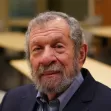The Daily Source of Urban Planning News
Endangered Places in 2015: Texas Dancehalls
Dancehalls—places for small-town Texans to gather for community—are struggling to survive in a changing Texas.
For Christmas 2016: A Video Game to Explore the Physics of Architecture
Couldn't find what the perfect gift for the plannerd in your life? There's always next year.
All the Places to Celebrate Christmas in July
Make a note of these places for tomorrow when you realize Christmas is 364 days away.
Five Surprising Facts About L.A.'s Homeless and How to End Homelessness
Ever have questions about the homeless? Here's a fact filled outline you can use to dispel some common notions about the country's largest homeless population—and some solutions—by affordable housing adviser Michael P. Russell.

Best Practices for Downtown Revitalization
Downtown revitalization comes in all shapes and sizes. A new, free guidebook from Smart Growth America offers advice for making revitalization work.

Staten Island Hasn't Seen the Good Side of Vision Zero
The early results of New York City's far reaching Vision Zero initiative to reduce traffic fatalities to zero has produced positive results—everywhere except Staten Island.

Remix Promises to Streamline Transit Planning
Based out of San Francisco, Remix is an intuitive, data-rich tool for transit planners as they consider new routes. All you need to do is draw out the line on a map and add stops.

Visualizing Global Urban Growth Through 2030
Geographer Duncan Smith mapped the predicted trajectory of worldwide urban growth from 1950 through 2030. Concentric circles of different shades show where and when growth was (or will be) the most dramatic.

Uber's Impact on the New York Rush Hour
Researchers found a small uptick in Manhattan traffic during rush hour, as Uber gains more riders from 4 to 7 p.m. than taxis lose. Uber also holds general sway over the other boroughs when it comes to for-hire vehicles.
Both Sides of the Controversial Renewal of the EB-5 Immigration Program
A regional perspective on the Congressional action to renew the controversial EB-5 program.

Detroit First U.S. City Awarded U.N's 'City of Design' Status
The United Nations Educational, Scientific and Cultural Organization has recognized the singularity of Detroit, dubbing the motor city the country's first "City of Design."

What's Wrong With Removing Sidewalks in the Name of Pedestrian Safety?
Broken Sidewalk analyzes an example of the kind of street design decisions continuing to encroach on pedestrian infrastructure around the country. The case study: Ninth Street in Louisville.

St. Louis' Multi-Family Market Ready for Takeoff
Permits to rehab existing multi-family buildings have skyrocketed in St. Louis.
Anchorage Considers Densification
In a city of sprawling surface parking, increased density may help close a serious affordable housing gap as Anchorage, Alaska, seeks ways to make development more affordable.
California's Population Now Tops 39 Million
New figures released by the California Department of Finance show that the state grew by 346,000 (to July 1, 2015). As in past years, the increase comes from natural births and immigration while more left the state than entered.
States React to Tax Impacts of Dropping Gas Prices
Certain states have had to scramble to restructure their gas taxes as gas prices have dropped—and kept dropping—lest transportation funds hit empty.
Facebook to Offer Cash for Employees to Live Closer to Work
Here's one way to improve jobs-housing balance: employers can incentivize short commutes by helping to pay for the cost of housing.
7 Finalists Chosen for Obama Presidential Center Design
Now we know who will compete for one of the most coveted design contracts in the country: the presidential library that will bear Barack Obama's name.
Which Fears Are Blocking Solutions in Your City?
A former planning commissioner recalls often being surprised at the passion and anger displayed toward small changes around the city of San Francisco, and attempted to get to the nature of the fear driving the opposition.
An Early Look at Seattle's Sound Transit 3 Ballot Initiative
Seattle is in the process of drafting a $27 billion transit funding initiative for the November 2016 ballot.
Pagination
Yukon Government
Caltrans
New Jersey Institute of Technology
Mpact (founded as Rail~Volution)
City of Camden Redevelopment Agency
City of Norman, Oklahoma
City of Portland
City of Laramie
Urban Design for Planners 1: Software Tools
This six-course series explores essential urban design concepts using open source software and equips planners with the tools they need to participate fully in the urban design process.
Planning for Universal Design
Learn the tools for implementing Universal Design in planning regulations.


































